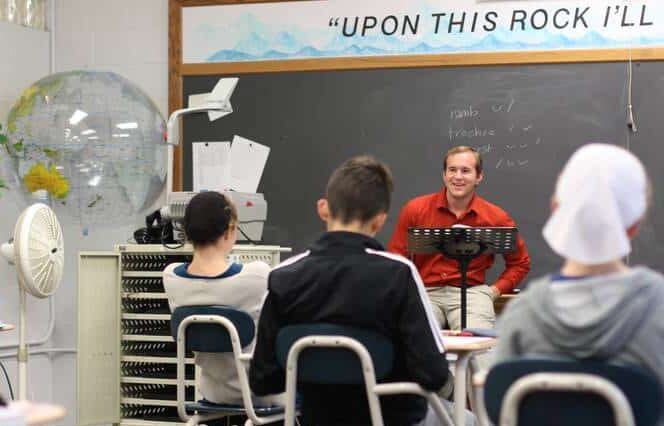Read-Aloud? But My Students Are Too Old For That!

This scene is familiar in the lower elementary classroom: students gather around their teacher or the librarian on a carpet, looking at the pictures, and listening to the story. Or maybe they are sitting at their desks after lunch, relaxed and listening to the teacher reading a book before starting the afternoon lessons. But for most older elementary students, and especially middle school and high school students, read-alouds have been replaced with reading assignments for the students to complete on their own, all too often focused on standardized testing objectives.
Why Read Aloud To Older Students?
- A major reason for read-alouds is to demonstrate to students of any age a love for good literature. Reading interesting stories can help reluctant readers to fall in love with reading, instead of just seeing it as a boring assignment.
- Reading aloud allows the teacher to expose children to different books and genres, including the classics, that the students might not pick up on their own. Some of the teacher’s favorite books might have sections that are inappropriate for students of a certain age, so the teacher can modify language, skip small parts in the story, or summarize certain sections when reading aloud.
- Reading aloud helps the students connect with their teacher, by seeing his or her commitment to reading. The reader and listener form an attachment, enhanced when the teacher stops reading to discuss certain points. This can bring strong life lessons to the students listening and allow them to form perspectives on issues the book characters are experiencing that the students have not gone through personally.
- Read-alouds help students to learn about other cultures and life experiences, to feel empathy and compassion for others, and to teach the students how to act in certain circumstances.
- In a practical sense, reading aloud allows the teacher to model reading strategies, such as reading with emotion and figuring out the meanings of unfamiliar words from the context. Listeners also increase their vocabulary, writing skills, language skills, and imagination. English language learners can also pick up vocabulary and grammar patterns from listening to stories being read.
- By older grades, most students do not have many recesses or breaks built into the school day. A read-aloud time gives a chance for students to relax.
- Finally, and perhaps most importantly, research shows that students who are read to are more likely to keep reading on their own.
How Do I Read Aloud To Older Students?
- One important factor in reading aloud to older students is to choose a book that they will like. The book should be on or slightly above their grade level and reading ability. It needs to be about a topic in which they are interested. Two helpful sources in finding books to share are the books Honey for a Child’s Heart by Gladys Hunt and Best Books for Kindergarten through High School from BJU Press.
- The teacher must read dynamically. Nothing bores a listener—child or adult—more than a monotone. The teacher should always read ahead to know what is coming and to prepare how to read each section.
- Rather than pushing rapidly through the book, the reader can stop periodically and discuss both content and writing style. This teaches the listener to engage with the story and also gives opportunity to point out literary and writing terms.
- “And after that, Mrs. Ludmiller tripped, falling into the – .” Falling into the what? A good read-aloud pauses each time at a cliffhanger, leaving the listeners wondering what will happen next and keeping them engaged with the text.
- It works for a good book to stand on its own as a read-aloud. But occasionally, the teacher may want to add extra activities or rewards to accompany the book, such as book clubs, projects, puppet shows, or foods that fit with what is being read.
If done with appropriate methodology, reading aloud can be just as profitable for older students as younger.
Resource
Campbell, Linda, and Christie George. “How Read-Alouds Can Benefit Older Students,” Accessed 1 February 2023.
Related Items
Leave a Reply
Feedback